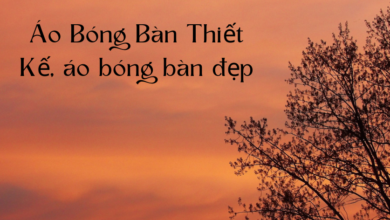Alaskan snow dragon: Complete information

The alaskan snow dragon is a colorful, rare and endangered species of bird. It is the only member of the genus Draconor that breeds in Alaska.
Dragons are large birds with long, thin bodies and wings. The females have a long neck, a long tail and thin legs.
Though dragons are not as well-known as other legendary creatures, such as unicorns or mermaids, they are still respected in their own right; particularly as symbols of beauty and strength.
The alaskan snow dragon is also believed to be the national bird of Alaska (the state’s official mascot). It is featured on the state flag, seal and sealaska coat of arms.[10]
The name “alaskan” comes from the Alaskan dialect word meaning “ice land”. The word has no relation to the word “alaska” meaning “ice”, which was introduced only in 1867 by John Ritchie.[11]
-
The Alaskan Snow Dragon
When I bought my first snowmobile all I knew was that it was going to be a great way to have fun in the winter. But no matter how much I read about snowmobiles, I could not find any information about how to get the most out of them (until now).
The alaskan snow dragon helps you get the most out of your snowmobile too. It’s a super-user friendly app that works with your snowmobile’s charging port and lets you charge it while you use it. Get all your charging cables and accessories together in one place and you can easily keep track of them all.
You don’t need to own a snowmobile to use this app; just download it, turn on the charging cable, plug it into your snowmobile’s charging port, and start using it!

-
The Abundance of the Alaskan Snow Dragon
In the late 1990s, journalist David Klee published a story about the alaskan snow dragon, a massive and beautiful creature that has been reported to live in the Arctic for as long as people have been reporting on it. Since then, there have been numerous documentaries, stories and books about this rare animal.
But over time we’ve discovered that it’s not nearly as rare as we thought. In fact, according to the Wildlife Conservation Society (WCS), they are probably more abundant than any other large mammal in North America (including all cats). And they are perhaps even more remote: they live almost entirely in remote wilderness areas on Alaska’s North Slope.
Today I want to tell you about our team’s attempts to build an app for the snow dragon… which is even harder than you might think. First off, there aren’t many of them left: at one point there were hundreds of them in Alaska alone! We don’t know how many there are now but some estimates put numbers between thousands and tens of thousands. So where can you play with one?
-
The habitat of the Alaskan Snow Dragon
A few years ago, the USGS was doing a study of the effects of climate change on the land use in Alaska. They found that there were no glaciers in Alaska and that the land was warming at a rate which would threaten its ecosystem. This was a huge shock to many Alaskans and led to some heated discussions. The end result? A “cap” on greenhouse gas emissions, which many Alaskans saw as an intrusion by foreigners who didn’t understand or respect their way of life.
The same happens with new product launches: if you are not able to live up to your value proposition (and clearly, you are not), people will have their minds made up about what is going to be considered “real” success. You can’t expect everyone to switch allegiances after having read your pitch deck or checked out your website — you’ll just create a backlash effect because they don’t want to believe your story (even when they see it). If you want people to stick around and become loyal customers, you need an authentic story that relates well to their values and beliefs. What kind of values do they hold? What kind of routines do they follow? How do they spend their spare time?
-
The diet of the Alaskan Snow Dragon
This is a lengthy and quite technical post on the actual diet of the Alaskan Snow Dragon. On the surface, it may seem like something that could only be done by an engineer or a biomechanist, but the story of how this particular dragon evolved into what it is today is a classic example of evolutionary biology:

The Alaskan Snow Dragon (A. siliqua) is a large, dragon-like species[2](adapted to ice conditions) native to Alaska. The species evolved in response to climate change, moving from tundra to subalpine and alpine habitats on the north coast of Alaska over thousands of years — as snow started melting in areas with lower elevation temperatures and higher temperatures were expected due to increasing Arctic amplification[3]
On top of that, A. siliqua is one of the most widespread alpine plant species with representatives in many mountain ranges across North America and Europe[4].
- siliqua are very photoreceptive animals[5] (the iris colour comes from light), making them excellent candidates for monitoring environmental changes caused by climate change[6]. In fact, they have been recently found to be able to detect ice thawing by detecting changes in their home range[7], which suggests that they can sense changes as far away as 150 km away from their natal site.
This situation has been further complicated by the fact that these animals have several adaptations (such as their knobs on their heads) which help them cope with low light levels in mountains.[8]
However, we’ve got a bit more here than simply physical adaptations; A. siliqua also use behavioural adaptations such as changing their burrows or moving around at night.[9] Other possibilities include an increased need for food sources due to increased predation rates or changes in prey availability brought about by climate change.[10]
In any case, A. siliqua are some of the most fascinating creatures in nature because they show a remarkable capacity for adapting and changing their behaviour based on new ecological conditions.[11][12] This makes them one of our examples for understanding how evolutionary adaptation works:
-
The life cycle of the Alaskan Snow Dragon
I’ve been thinking a lot lately about the life cycle of the alaskan snow dragon. I’m not talking about the undulating, tumbling creature of myth and legend that is often confused with a snow leopard, nor even the more common panther. I’m talking about something a bit less exciting: a small, black and white critter that eats fish and carrion as well as other small animals.
This is actually fairly common in Alaska, and it is quite easy to spot in its natural habitat. In fact, it has been described as “the most common sight you will see from above”. However, when we are talking about social media marketing for your product it can be just as important to know what shape this creature takes
For example: you might want to go with an exaggerated caricature like this one (which was originally posted on Facebook) which shows its head on the left side of its body (and could be easily used on your own site):
But if instead you went with something like this (which was originally posted on Twitter):

It makes an interesting point about how social media can make people feel comfortable sharing their thoughts without being too self-conscious or vulnerable. As we have both seen in our own lives: many people are more comfortable expressing themselves publicly than they are privately; but for some reason that doesn’t translate into public vs private selves on social media. So when we don’t understand why someone would share something publicly but not privately then we may try to force them into doing that just by building an identity around it – and then we feel like we have done them wrong.
It also illustrates how easy it is to feel defensive when someone else tries to do something differently – or worse yet, puts forward ideas that aren’t your own! You may very well be right; yet if someone has put forward an idea of yours that you find different or better than anything you have ever done before – then there is nothing wrong with trying to get them to change their minds by pointing out their mistake or error in judgement. Problem solved – right?
Here’s another version of the alaskan snow dragon:
And here’s another version with three feet instead of two:
And another one where the body is getting smaller because he’s eating fish! (The caption says “Snapper” but my guess is he’s eating caribou). This one really helps show
-
Conclusion
It is the purpose of this post to help you in your endeavor of launching a product. It is a disclaimer, because I can’t guarantee that anything in this post will work for you and you may have issues with any aspect of the process, but I can say that it is likely a lot of what has worked for me and others has worked for you too. I am only posting this because I’ve read so many posts on the topic and they often go into too much detail or don’t mention things that aren’t worth discussing. This post, however, will do just that (although it will also be very brief).
There are lots of formulas out there to help launch a new product, but none of them really cover what you need to do as an early-stage startup (or at least not very well). If you are trying to figure out how to launch an app, try looking at the Lean Startup methodology. If you want to launch a new website, try looking at buying traffic from Google Adwords or Facebook Ads. If you want to launch something other than an app, then there are some good resources out there on how to build systems and/or sales teams around your product ideas as well:
- Evaluating Your Product Ideas
- Creating Your Product Roadmap
- Creating Your Product MVP
- Building Sales Teams Around Your Product Ideas
If any part of this post resonates with your experience or seems useful in your development process, please feel free to share it! Also check back here frequently because these posts may be updated frequently as we continue our work building B2B startups!



